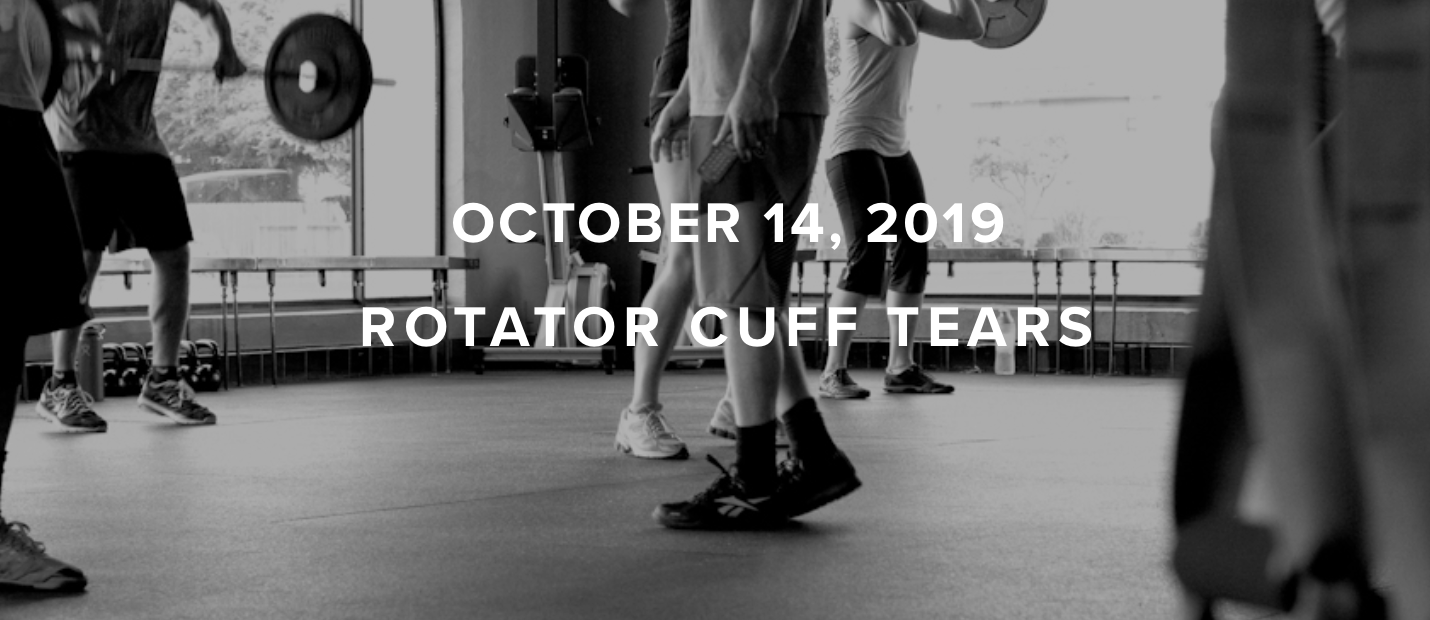Baseball and Weighted Balls
Why are Therapists, Trainers, and Coaches using weighted balls?
Over the last decade, baseball has shifted to expressing higher velocity on both the throwing and hitting sides. Specifically, at the major league level, we have seen an increase in the average fastball climb over two miles per hour. This inevitably has a trickle-down effect as players recognize the benefits of improving their throwing velocity. As a result, it is now very commonplace to see a variety of instructors, camps, tools, and other training methods designed with the focus of helping a player throw a baseball harder. One of the more popular and controversial methodologies is the usage of weighted baseballs. In this blog article, we will take a deep dive into the facts and myths of weighted ball training and discuss when is an appropriate time to begin utilizing them.
What are weighted Baseballs?
Let's start by discussing what weighted balls are. When talking about a weighted baseball program, it most commonly refers to some combination of actual baseballs that are most often a variety of weights between 2 and 11 ounces (a regulation baseball being between 5 and 51/4 ounces) or plyocare balls. Plyocare balls are baseball to softball-sized rubber balls that weigh anywhere between 3.5 ounces to upwards of four pounds. The usage of each of these balls in terms of how they are thrown, what intensity they are thrown at, and the number of times they are thrown varies significantly to the point beyond this article's scope.
Now that we have a basic understanding of what the term 'weighted balls' means let's get into some common myths associated with their use.
Myth #1:
Weighted balls are only used for velocity enhancement
This is the biggest misconception regarding weighted ball usage, the idea that the only time athletes will use weighted balls is to throw them as hard as possible. If you look at social media, it is understandable why that perception is out there as it is very easy to find a video of an athlete throwing either a leather-weighted baseball or a plyocare ball as hard as they can in some fashion.
In actuality, most training programs that utilize them do so to work on improving a thrower's mechanics. Most commonly, they will be used with what is called a 'constraint drill' - which is a drill that is designed to focus on a specific aspect of the throw. The athlete will complete the drill in a manner where a particular part of the throw is accentuated. Eventually, with enough repetitions of these drills, the pieces that have been focused on will begin to come together in the athlete's full throwing motion. The rationale behind using the weighted balls is that each ball causes the athlete to move slightly differently, which changes how the athlete has to complete the task of throwing the ball to the target. This allows the athlete to become more 'calibrated' to what their body is trying to accomplish regarding executing an efficient throwing motion. These drills are often done at a lower intensity than what can be considered maximum or even game speed. In these instances, enhanced throwing velocity is the byproduct of lots of hard work and focused repetitions, not something that is haphazardly strived for.
In contrast, there are certainly times when some form of weighted balls are utilized to be thrown as hard as possible. The rationale for or against this training method is also beyond this blog's scope. However, it should be noted that this is often done at a particular time of the year, generally, the offseason, after the athlete has taken some time off after the competitive season and has taken a month or two to ramp up the amount of throwing they have done so their arms are capable of throwing at a high intensity. And with that, this is still done, in most cases, once a week for usually just a 4-6 week stretch.
Myth #2 Weighted Balls Lead to Injuries
The second most commonly perpetuated myth regarding weighted balls is that if a thrower utilizes them, they will eventually sustain an arm injury. A lot of this thought process ties in with myth number one, where people automatically assume that if someone uses weighted balls, they are using them most often with high-intensity throwing and doing so multiple times throughout the week. Since we have already debunked that thought process, let's get more into the claim that throwing a ball heavier or lighter than the standard 5 ounces is more dangerous than throwing a regular baseball.
Within the medical community, the 2018 study' Effect of a 6-week weighted baseball throwing program on pitch velocity, pitching arm biomechanics, passive range of motion, and injury rates' by Reinold et al. commonly gets cited as hard evidence that weighted baseballs are dangerous. In this study, which broke up 13-18-year-olds into groups that either utilized weighted balls or completed a throwing program with just a baseball, the authors concluded that while the weighted ball group did increase their velocity, they also had a 24% injury rate. If we are taking this conclusion strictly at face value, then we would likely come to our own belief that weighted balls are inherently more dangerous than a standard baseball. However, diving deeper into this study, we find many variables within the two groups that could have contributed to an increased injury rate. Specifically, within the weighted ball group, there was a significantly higher amount of overall throws per week, a very short time before the athletes were asked to throw at high intensity, game or maximum intensity throwing being performed three times a week, and a larger dispersion of ball weights being thrown at maximum intensity than what is seen in most standard weighted ball training programs. All these variables within themselves could warrant a deeper breakdown of why it would lead to a higher injury rate. However, considering that four variables contributed to the experimental group experiencing much higher stress levels, it becomes challenging to point to one thing and definitively say that one of them was the reason why injuries were higher in the experimental group. This also leads us to our next point regarding injuries in sports in general.
Baseball injuries are tough to predict
Sports injuries in themselves are incredibly complex phenomena. An athlete's readiness, performance, and health are heavily influenced by hundreds of factors that act upon an athlete any day. These can be internal, such as lack of sleep or higher stress, or external - tournaments, practice schedules, etc. These factors are also in a constant state of flux. With that, to be able to say that one single tool, with no context of how that athlete uses that tool or how the other internal and external factors are influencing that athlete, is the cause of an athlete's injury is incredibly short-sighted and doing a disservice to them by not identifying where they may also be limiting themselves.
“Weighted balls are a tool that can be either utilized appropriately or inappropriately, just like a standard baseball, dumbbell, or running shoes.”
Weighted balls are a tool that can be either utilized appropriately or inappropriately, just like a standard baseball, dumbbell, or running shoes. Understanding appropriate and inappropriate usage is extremely important in reducing the likelihood of injury.
How can you implement weighted balls into training?
Now that we have discussed weighted balls and the common myths surrounding them, let's look into how we can implement them into an athlete's training.
As discussed previously, with any new training tool, we want to avoid jumping into the amount of usage as someone who has been utilizing weighted balls for years. A gradual on-ramp of volume, intensity, and range of weights should be used. Additionally, we must consider the time of year and what an athlete's game and practice schedule looks like when considering if we will change their throwing routine. If it is a time of year when they are in tournament season and playing 6-7 games a week, their arm is likely accumulating considerable fatigue. This would not be the ideal time to incorporate any new training device, let alone weighted baseballs.
““Strengthening is helpful for performance and also to prevent throwing injuries. Studies have shown that there is an association between rotator cuff weakness and throwing injuries.””
For most athletes, the easiest way to implement will be during their warm-up throwing routine. This is done after a full dynamic warm-up has been performed to ensure the athlete is ready to throw. Generally, a good place to start is with ten to fifteen throws at the beginning of their throwing routine. Of note, this isn't necessarily to add a volume of throws to their training; this would replace the first ten or so throws they would typically do with a traditional baseball. Additionally, it is best to begin with a ball that is relatively close in weight to the regulation baseball to start. This may be an ounce or two in either direction, heavier or lighter. As weeks pass, the number of throws and range of weights being utilized can increase. Again, as a whole, this is not increasing the total number of throws an athlete is doing, just replacing throws they would typically get with a regulation baseball.
Getting into when it would finally be appropriate to do a high-intensity throwing program, whether they are utilizing weighted balls or not, would be a lengthy and in-depth article in itself and would be too hard to generalize to a broad population. For the sake of this article, we will only mention good rules of thumb to follow when considering following a high-intensity throwing program:
High Intensity Throwing Rules of Thumb:
It should not be during a competitive season.
It should be after the athlete has gradually built up the volume, frequency, and intensity of throwing for a minimum of 4-6 weeks.
There should only be one day a week where the athlete is throwing at their highest intensity and no more than one other day where they are throwing close to that intensity.
The athlete should also be completing some type of strength and conditioning program.
attention to detail is key when adding weighted balls to a program
Beyond these points, there are many other factors to consider before deciding if an individual is ready for a high-intensity throwing program. This is why an athlete should work with a coach with a lot of experience writing throwing programs for athletes and following the guidelines listed above. Also, it is highly recommended that a medical professional screen an athlete to determine if any red flags must be addressed before participating in any throwing program.
“Baseball and softball are very unique sports in terms of what is asked of the body to be able to be competitive at any level. To give athletes the best chance for success in both terms of health and performance requires a level of attention to detail not typically seen in other sports. ”
As mentioned, there is much to consider when implementing weighted balls into an athlete's throwing routine. Attention to detail concerning an athlete's readiness, the ramp-up of throwing, and the management of stresses throughout a week or month is of utmost importance. Finding someone to guide your athlete through this process is vital and can go a long way in staying healthy and improving their throwing performance.
How can A physical therapist Improve a Baseball Season or help the off-season?
A PT can help educate a patient on their symptoms, beliefs about movement, breathing, exercise and pain, loading, and how to start to improve your condition.
PTs can provide a strength, range of motion (ROM), balance and coordination assessment of your upper extremities and spine to identity what’s your hitting and pitching
A PT can assess old injuries and their impact on a clients performance
As manual therapists, we can provide gentle mobilizations and soft tissue work to improve joint mobility and decrease pain. We can help train a client’s awareness and proprioception so it can handle unexpected stresses and strains with more resiliency.
As a movement speciality a physical therapists can design an individualized program with mobility, ROM, and strengthening exercises for an athlete’s trunk, posture, neck, shoulder and lower extremities.
A PT can design a daily/ weekly maintenance home program for TOS.
A PT can also give you a program for progressive return to activity and progressive loading to facilitate improved tissue strength and tolerance.
AUTHORS:
Terry Phillips, PT
LWPT Kenmore Physical Therapist
CONTRIBUTORS:
Dr. Edward Khalfayan, MD
Orthopedic Surgeon, Former Mariners Team Physician, Seattle Seahawks team physician
Dr. Bob Adams, DO
Ret. USA Track & Field Head Medical Doctor, Sports Medicine Physician
Ben Wobker, PT, MSPT, CSCS, CFSC, SFMA
Founder & Director Lake Washington Physical Therapy
MORE BLOGS
MORE WEBINARS
References
Chandra, Venita, et al. “Thoracic Outlet Syndrome in High-Performance Athletes.” Journal of Vascular Surgery, vol. 58, no. 2, 2013, pp. 567–568., doi:10.1016/j.jvs.2013.05.086.
Ferrante, Mark A., and Nicole D. Ferrante. “The Thoracic Outlet Syndromes: Part 2. The Arterial, Venous, Neurovascular, and Disputed Thoracic Outlet Syndromes.” Muscle & Nerve, vol. 56, no. 4, 2017, pp. 663–673., doi:10.1002/mus.25535
Hangge, Patrick, et al. “Paget-Schroetter Syndrome: Treatment of Venous Thrombosis and Outcomes.” Cardiovascular Diagnosis and Therapy, vol. 7, no. S3, 2017, doi:10.21037/cdt.2017.08.15.
Otoshi, Kenichi, et al. “The Prevalence and Characteristics of Thoracic Outlet Syndrome in High School Baseball Players.” Health, vol. 09, no. 08, 2017, pp. 1223–1234., doi:10.4236/health.2017.98088.
Sanders, Richard J, et al. “Diagnosis of Thoracic Outlet Syndrome.” Journal Of Vascular Surgery, vol. 46, no. 3, Sept. 2007, pp. 601–604., www.sciencedirect.com/science/article/pii/S0741521407007343.
Thompson, Robert W. “Thoracic Outlet Syndrome and Neurovascular Conditions Of The Shoulder In Baseball Players.” Baseball Sports Medicine, by Christopher S. Ahmad and Anthony A. Romeo, Wolters Kluwer, 2019.
Watson, L.a., et al. “Thoracic Outlet Syndrome Part 1: Clinical Manifestations, Differentiation and Treatment Pathways.” Manual Therapy, vol. 14, no. 6, 2009, pp. 586–595., doi:10.1016/j.math.2009.08.007.
Watson, L.a., et al. “Thoracic Outlet Syndrome Part 2: Conservative Management of Thoracic Outlet.” Manual Therapy, vol. 15, no. 4, 2010, pp. 305–314., doi:10.1016/j.math.2010.03.002.


















